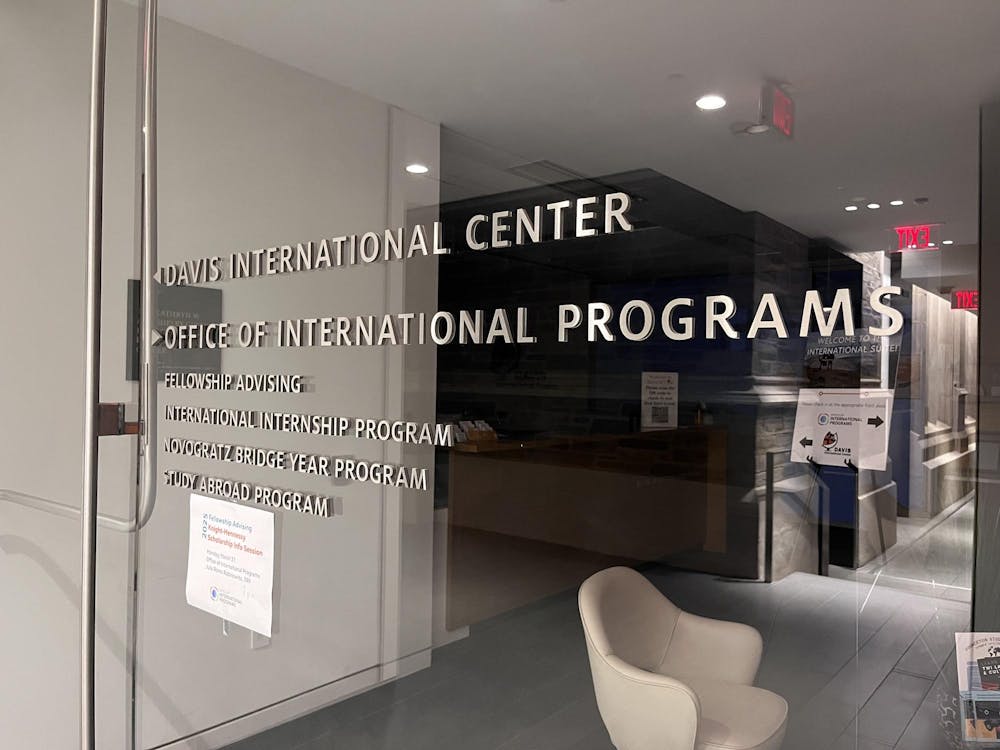Eight hundred pages of reading per week for a two-course program is enough to send most students racing to the Add/Drop page on SCORE. But for seven groups of Princeton underclassmen, the benefits reaped in the University’s year-long humanities sequence are proportional to the challenges.
The University has offered its intensive Interdisciplinary Approaches to Western Culture course, known to students and faculty as the humanities sequence or “HUM,” to freshmen and sophomores since 2003. The sequence consists of four classes that split equally between two semesters and fulfill four distribution requirements while giving students a thorough grounding in Western intellectual traditions.
Though taking the humanities sequence fulfills one Historical Analysis, one Epistemology and Cognition and two Literature and the Arts requirements, it’s not a course to take lightly, current HUM student Nicolas Lulli ’13 said. “People don’t just take this to knock out a distribution requirement,” he explained.
The humanities sequence has an extensive and challenging reading list, requiring students to read between 300 and 800 pages each week in texts ranging from the Bible and the Aeneid to “Paradise Lost” and “Frankenstein.” Instead of using guest lecturers like the course did at its inception, a changing cast of professors from several departments brings different viewpoints to the course each year.
“HUM is by far my heaviest course,” Salina Yuan ’13 noted. But, she added, “it’s not impossible, yet.”
“It is by far the course that requires the most work: I do more work for HUM than I do for the rest of my classes combined,” Lulli said. Lulli, who is also a member of the sprint football team, also explained that the workload is “difficult, but possible if you’re very organized.”
The sequence even presents challenges for the faculty members who teach it.
When asked about his goals for the sequence, professor Andrew Ford said in an e-mail, “Number one, survival.” Ford, who is currently in his first year teaching the course, added that despite the fact that faculty begin preparing during the spring, it is still difficult to cover so many large books in such a short time. “It is a bit of a rollercoaster ride,” he explained.

Though the sequence is not required as part of a Princeton student’s academic curriculum, several of the University’s peers have a similar, mandatory course program.
Columbia, for example, requires its sophomores to take two courses which examine Western civilization and great literary works as part of its Core Curriculum.
“The obvious difference [between the Core Curriculum and Princeton’s humanities sequence] is that HUM is more intensive since it is designed only for the highly motivated,” Ford explained. “Both courses read many of the same books, but HUM reads more, somewhat more widely, and moves more quickly.”
History professor Anthony Grafton, who has taught the sequence in the past, likened Princeton’s course to the Directed Studies Program at Yale, which, like the Princeton sequence, is optional. Yale’s program, however, spans three courses instead of four and has 125 students enrolled per year as opposed to Princeton’s 50.

Both Grafton and Ford, however, said that having the humanities sequence be optional creates the best academic environment and ensures that its students will be highly motivated. There “are universities that offer [a required humanities sequence] very effectively,” Grafton noted, but the option of taking the course at Princeton makes the sequence “as attractive as possible.” Ford added, “[I]t seems … a bit much to ask students to devote four course-slots in their first year to the field.”
“Every precept has been fantastic,” largely because everyone is actively engaged, Lulli said. “If you’re willing to put up with the workload, you have to love what you’re doing,” he explained, adding that the humanities sequence is his favorite course.
Since the class size is small, students in the sequence often form strong social bonds as they participate during both lectures and precepts, Grafton added.
This environment is conducive to a meaningful study of the material, Jason Kaplan ’12 said in an e-mail. “Engaging time-honored classics of literature, philosophy, and history are something that everyone should probably try at some point in their life, and the opportunity to do it alongside such able guides and motivated students was really rewarding for me,” he said.
Grafton also noted that taking the class helps people to develop a baseline for more advanced study in the humanities.
“I think HUM is one of those rare classes that can be enjoyed as an end in itself as well as a bridge to other subjects,” Kaplan explained.
Natalie Webb ’12, an operations research and financial engineering major who took the sequence last year, rarely opens texts like Virgil’s on a regular basis as part of her concentration. But she continues to see rewards in having taken the sequence despite taking four technical classes this semester, she said.
“I had always wanted to have a great books course that went chronologically and spanned a large portion of the Western civilization to see where everything fit in the tradition,” Webb explained. “In my reading this summer I found that I had a much better sense of the flow of Western thought.”
Such benefits outweigh the program’s heavy workload for many students.
“So far I’m loving it,” Yuan said. “I’m glad I decided to take the plunge.”







